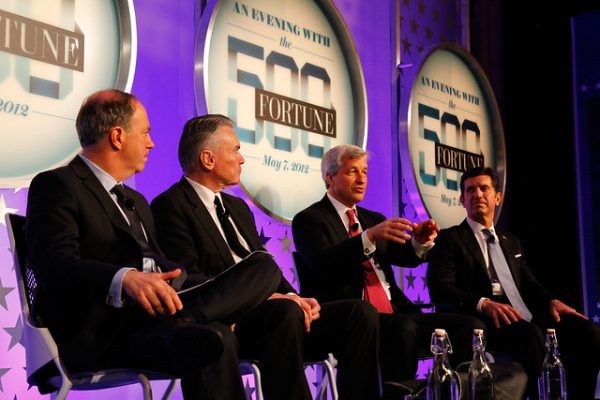
My local newspaper here in Greensboro, North Carolina, and The New York Times both recently published lists of the highest paid CEOs based on newly released data for 2018. The local paper published a list of the 42 “top executives” with “significant Triad ties” (the Triad includes Greensboro, Winston-Salem, and High Point, North Carolina). The New York Times published a list of the 200 highest paid Fortune 500 CEOs in 2018.
When it comes to gender and ethnic diversity, neither list is encouraging.
I have been studying the make-up of the American power elite for decades, and this has included careful monitoring of the gender and ethnic make-up of Fortune 500 CEOs and corporate directors. This research resulted in three editions of a book titled Diversity in the Power Elite. From the first edition in 1998 to the third edition in 2018 there were some dramatic increases, especially in diversity among the CEOs, but also among the corporate directors. By the third edition, the numbers had continued to climb for white women and for South Asians, but had remained static, or had decreased for those in the other groups we looked at. There were, for example, fewer African American CEOs of Fortune 500 companies when the third edition of our book came out in 2018 (four) than when the second edition came out in 2006 (six).
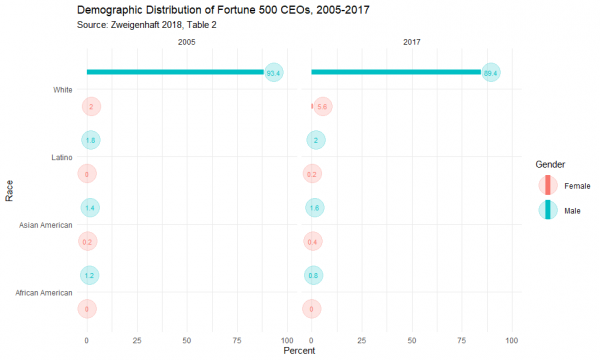
I was interested, therefore, to see these two new lists of high-paid CEOs in terms of gender and ethnic diversity. For both lists, almost all are men: in the local sample of Triad CEOs, 40 of the 42, or 95%, are male; similarly, in The New York Times sample of 200, 192, or 96%, are male.
The two women in the Triad sample appear pretty far down on the list: Dr. Julie Ann Freischlag, the CEO at Wake Forest Baptist Medical Center, whose compensation was $1,201,109 in 2018, is #33 on the list, and Cynthia Gordineer, the CEO of United Way of Forsyth County Inc., whose compensation was $221,543, is #41. In The New York Times list of 200, the seven women are spread out, with the highest at #5 on the list, Safra Catz, CEO of Oracle, who pulled in a total compensation package of $108 million (up from “only” $41 million in 2017), and the others at #31, #60, #61, #120, and #144.
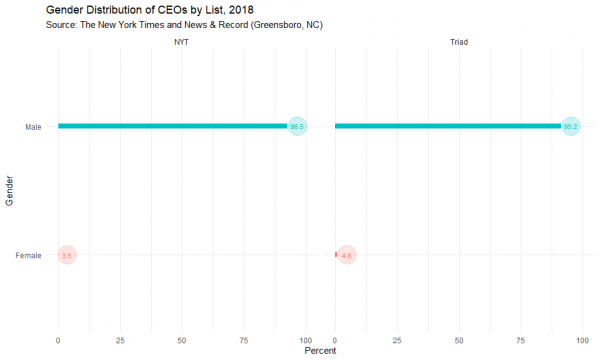
It is also striking that very few of the CEOs on these two lists are people of color. The sample of Triad CEOs includes one African American: Marvin Ellison, who left his position as CEO at J.C. Penny’s in July 2018 to become the CEO of North Carolina-based Lowe’s; in 2018 his compensation was $14,302,791, #5 on the Triad list. The list also includes one Latino, Nicando Durante, the CEO of British American Tobacco, a Brazilian whose parents moved to Brazil from Italy (and, thus, the surname “Durante” which certainly does not sound Brazilian); his total compensation in 2018 was $11,513,230, placing him #9 on the Triad list. Also on the list is Nassim Usman, the CEO of Catalyst Biosciences, a Canadian of German and Indian descent, whose compensation was $2,442,313 (#23). Therefore, 37 of the 42, or 88%, are white men.
What about the 200 highest earners on The New York Times list? Again, the large majority – 182 or 91% — are white men. In addition to the seven white women, there are five men who were born in India, four Latinos (one born in Argentina, two born in Brazil, and one born in the United States), one African American, and one Iranian-born CEO.
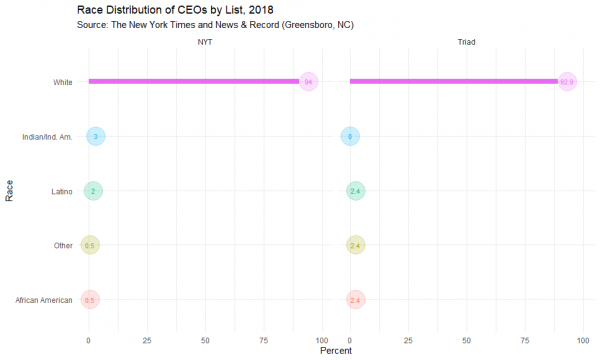
Therefore, when it comes to gender and ethnic diversity among CEOs, these figures — showing that almost all the CEOs in both the local and the national sample were white males — indicate that not much has changed. Since 2015, the percentage of white men among Fortune 500 CEOs has been between 89% and 90%. And, in fact, if one factors in that the Latinos on these two lists are likely to be seen as white, not people of color, the numbers are even higher (our research on Latinos in the power elite demonstrates that many Latinos in the corporate elite are seen as, and see themselves as, white).
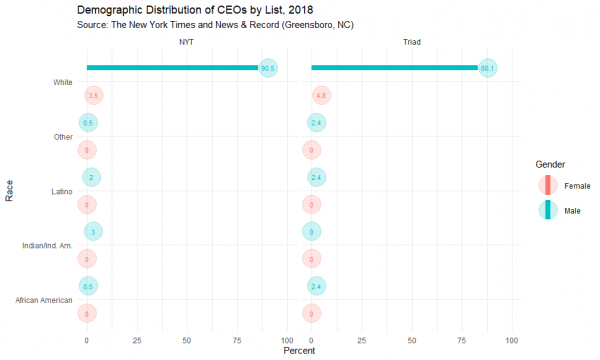
With the exception of white women and South Asian men — who have shown slow but mostly steady increases in numbers over the years — the numbers have stayed even or dropped for the other groups we have looked over the past decade. For example, Marvin Ellison, who is on the Triad list (at $14 million, he did not quite make The New York Times list of the top 200), and Kenneth Frazier, the CEO of Merck, who is on The New York Times list ($21 million in 2018, up from $17 million in 2017), are two of only three African American CEOs now in the Fortune 500 — 15 years ago there were six.
Around the turn of the century, when there were dramatic increases in the number of women, African American, Latino, and Asian American Fortune 500 CEOs, I thought these appointments indicated that the make-up of the corporate elite might really be changing. This has not been the case. A few years ago I wrote an article about diversity in the corporate elite subtitled, “Has the Heyday Come and Gone?“ It is not clear that the heyday really came, and it certainly is not here now.
